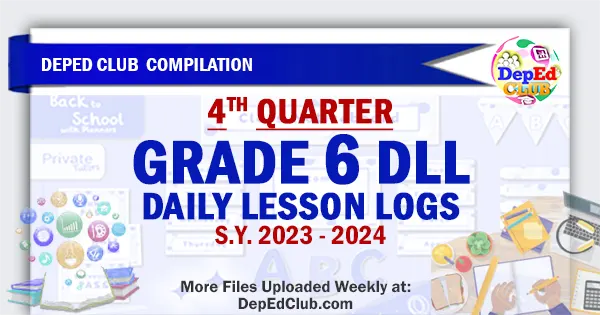To help teachers unlock the full potential of their students in today’s dynamic educational landscape, we are constantly uploading our ready-made Week 3 – Quarter 4 Grade 6 Daily Lesson Log | April 15 – 19, 2024 DLL. Our long-term goal is to consistently update and publish our ready-made weekly Grade 6 Daily Lesson Logs. Just visit this page regularly for the latest uploads.
We are grateful to all of our Contributors, File Editors and Tech Volunteers who worked sacrificially and without hesitation to manage the content of our website and social media accounts. Thank you to everyone for your continued support.
Guide for Blended Learning
In teaching and learning, teachers are dedicated to fostering an environment where every student can actively engage and excel. Traditionally, the boundaries of education were defined by structured in-school lessons and standardized curricula. However, the integration of on-site and distance learning demands a more comprehensive approach that embraces personalized learning and adaptability.
Teachers embarking on blended learning journeys must navigate several key considerations. Firstly, they must curate learning tasks that seamlessly align across various environments necessitating a heightened level of competency. This involves not merely replicating in-school practices but evolving teaching strategies to effectively utilize an array of tools and resources.
Furthermore, teachers must cultivate a mindset open to change and collaboration. As they design blended learning experiences, they should engage in dialogue with peers to address challenges, dispel anxieties and foster a shared vision of effective education.
Taking risks and innovating are crucial components of this process. Teachers must be encouraged to explore new pedagogical approaches tailored to their students’ needs and contexts. This necessitates ongoing reflection, feedback and professional development.
Effective assessment practices are essential for gauging student progress across different learning environments. Teachers must design assessments that align coherently between in-school and distance tasks ensuring equitable opportunities for all students to demonstrate their learning and identify future needs.
Moreover, fostering a sense of community and support is paramount. Teachers should maintain regular communication with students and cultivate a collaborative culture that transcends physical boundaries thereby alleviating anxieties and enhancing student-teacher relationships.
As teachers navigate the complexities of blended learning, they must also liaise with families and the wider school community. Clear communication and guidelines ensure that all stakeholders are aligned and supportive of students’ learning endeavors.
Additionally, supporting newly qualified teachers and managing one’s working conditions are vital aspects of ensuring a successful transition to blended learning environments. Providing mentorship, resources and clarity on expectations contributes to professional growth and well-being.
Embracing blended learning requires a complex approach that prioritizes adaptability, collaboration and student-centered instruction. By navigating these considerations with diligence and innovation, teachers can unlock the full potential of their students in today’s dynamic educational landscape.

